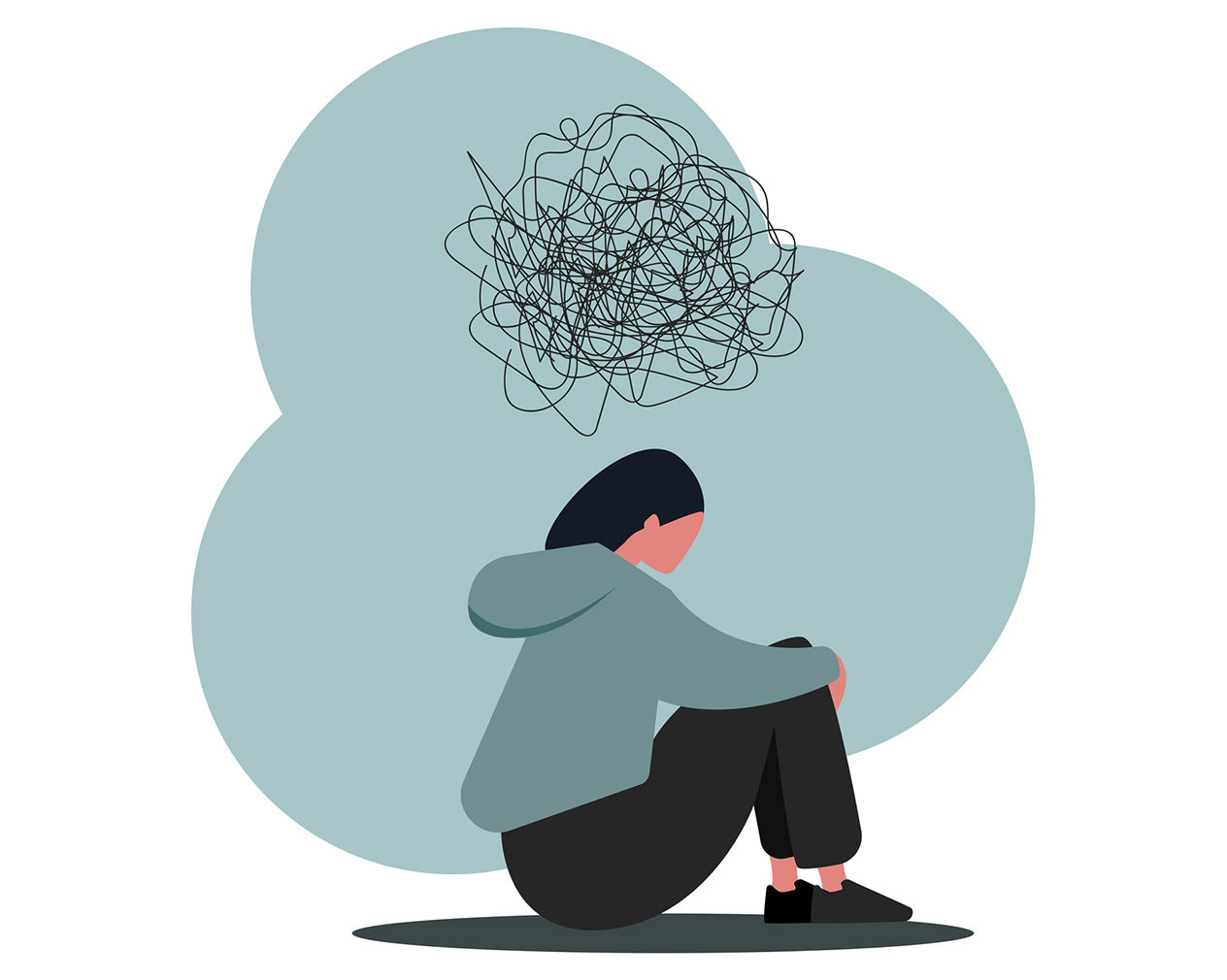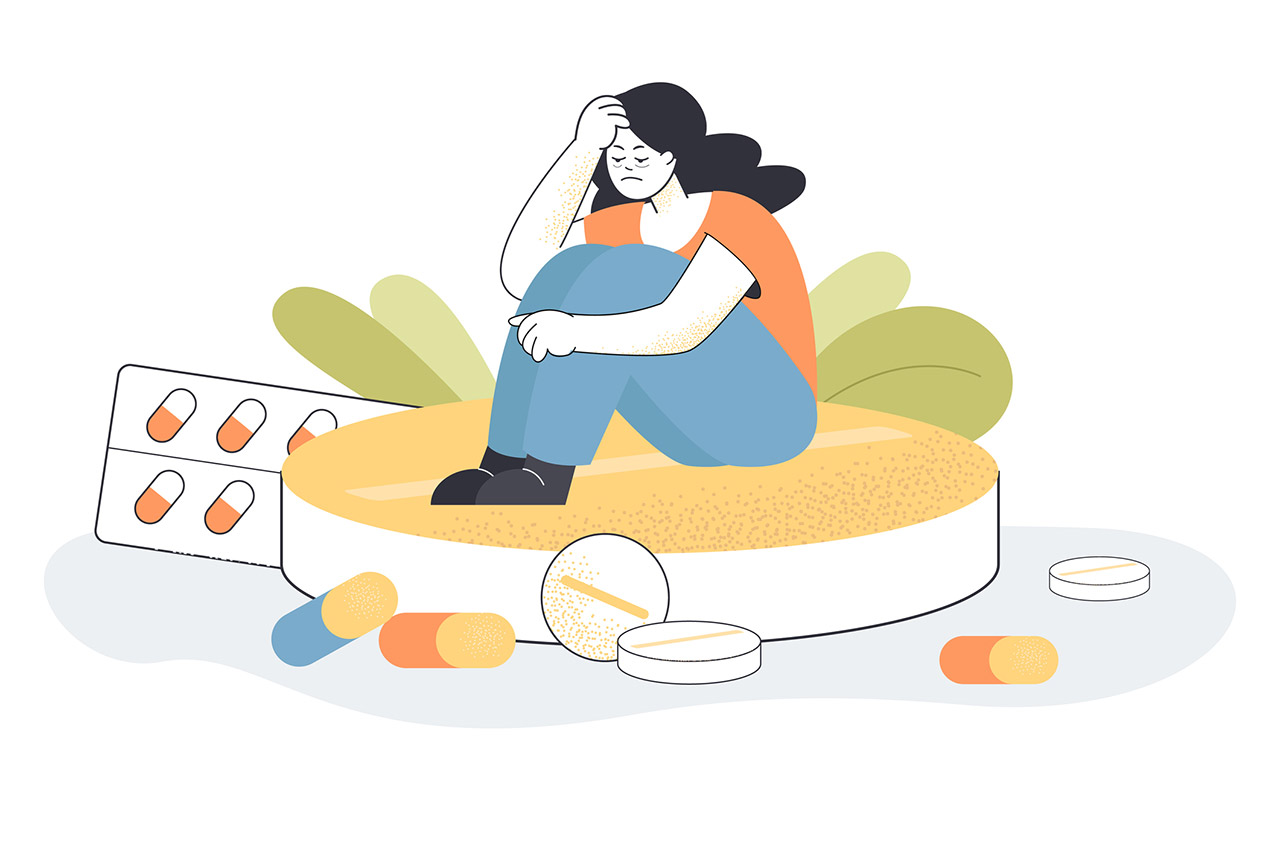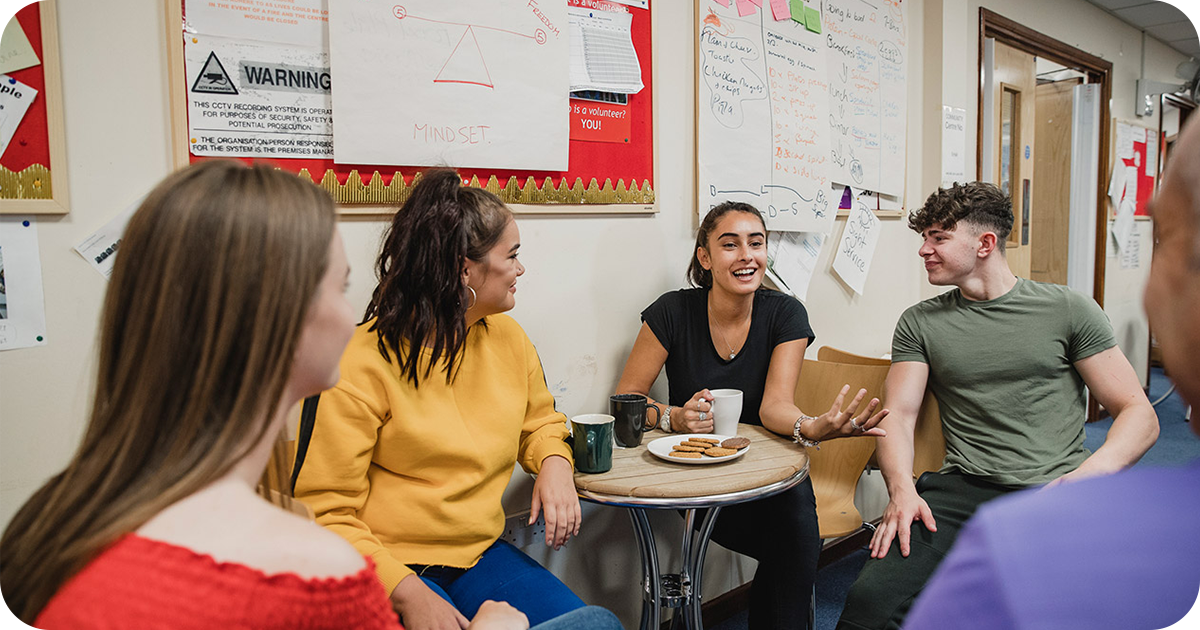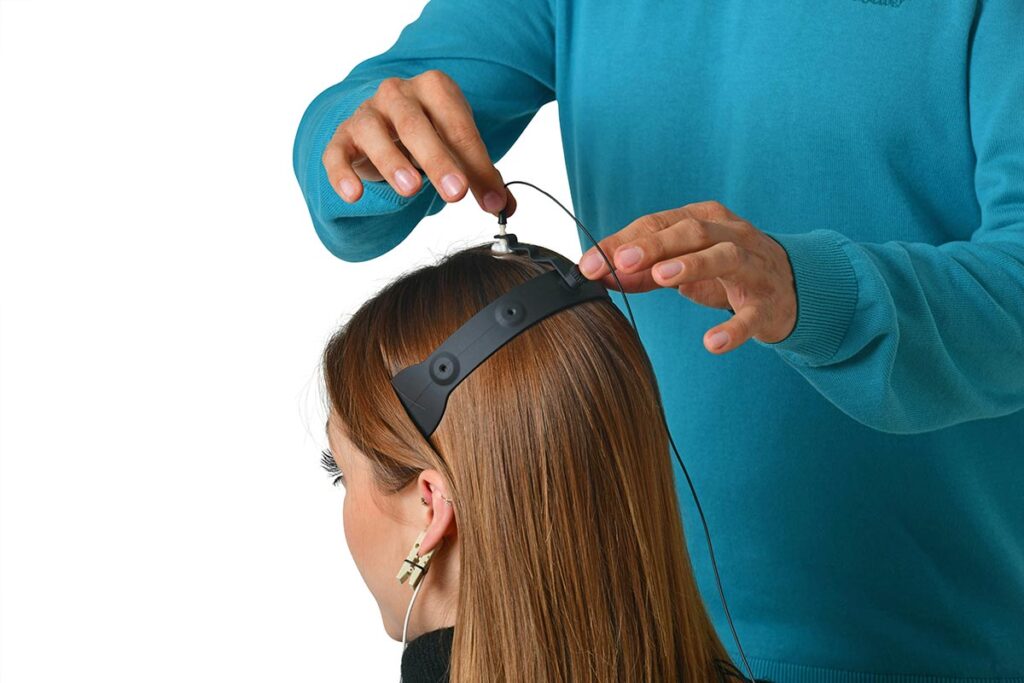Addiction is extremely difficult to handle, and facing your addiction head-on requires a strong network of support. Counseling, meetings, and rehabilitation centers can all help treat your addiction issues, but nothing compares to community-based addiction treatment. Having the support of your community when seeking treatment can be a beneficial asset that may help you get clean and stay clean.
How to Recognize Active Addiction
When it comes to substance abuse and addiction, it’s important to remember that people using addictive substances don’t choose to develop dependencies. Because of how certain drugs affect brain activity, addiction can happen unexpectedly and quickly. Addiction can be almost unavoidable and take years of therapy and recovery efforts to reverse. Active addiction is the term used by medical professionals to describe the period of time in which someone is suffering through chronic substance addiction while using drugs and or alcohol, as well as short stints of sobriety followed by quick relapses.
Addiction recovery is not a linear process, and relapses are expected during the process towards recovery. Finding an effective treatment plan that makes sure to position you and your needs above penalizing you for substance use is the key to recovery. One of the most beneficial treatment plans for addiction is community-based addiction treatment, which helps lower the amount of shamefaced by someone in active addiction while also providing a large network of support for that individual, creating a safe community to help encourage those in active addiction to begin recovery.
Signs of Active Substance Addiction

Active addiction is a very complex and nuanced topic. The idea of addiction and treatment for addiction is heavily stigmatized and often used to discredit those facing a substance abuse issue. The truth is, no one chooses to become addicted to a substance, and blaming someone in active addiction for their substance use only worsens the problems they’re already facing. Trauma, family issues, genetics, and even certain industries can make drug use seem like an escape, but this shouldn’t be blamed on the person battling substance abuse.
Determining whether someone is in active addiction and using a substance is dependent on the individual. When it comes to community-based addiction treatment, making communities aware of the different reasons why people begin using different substances, as well as what the signs are that someone is in active addiction, are the first steps towards encouraging those who are struggling to begin their path to recovery.
Depending on the kind of drug, the symptoms of active addiction vary from one individual to the next but can be broken into three different sub-categories:
- Physical signs of addiction
- Behavioral signs of addiction
- Emotional signs of addiction
For most people in active addiction, these changes are noticeable, especially during periods of relapse. Each type of reaction or change in behavior can be attributed to other underlying factors; however, if you know the individual exhibiting these behaviors has been or is using, this could be a result of their substance use.
Physical Signs of Addiction
Physical behaviors that denote an active addiction can range from small, slightly unnoticeable changes in someone’s appearance to full-blown drastic shifts in presentation. Symptoms like a runny nose, dietary changes, or lack of energy can also be attributed to other factors, such as illness or tiredness. However, other, more noticeable changes like sudden weight loss or slurred and repetitive speech can be a more obvious indication of active addiction.[1]American Society of Addiction Medicine. (2019). Definition of Addiction. American Society of Addiction Medicine. Retrieved February 24, 2022, from … Continue reading
Behavioral Signs of Addiction
Similar to physical indicators of active addiction, some behavioral signs of active addiction vary from person to person. Small behavioral changes that might not seem so unusual or alarming, such as isolation and trouble sleeping, can also be tied to changes in mood or general fatigue. However, bigger problems such as financial troubles, relationship issues, or absences at work or school could all be signs that someone is struggling with an active addiction and may be in need of help.
Emotional Signs of Addiction
Emotional signs of addiction tend to be the most noticeable and tell-tale indicators that someone is actively battling a substance abuse issue, especially when it comes to talking about drug use. For example, if someone begins getting extremely defensive about their drug habit, or they try to justify using the substances by explaining how it somehow helps them, this may be a sign that they are actively using.[2]Tang, Y., Posner, M., Rothbart, M., Volkow, N., Circuitry of self-control and its role in reducing addiction.(2015). Trends in Cognitive Sciences, 19(8), … Continue reading
Withdrawal Symptoms

Withdrawal is a part of the addiction timeline where an individual experiences a physical and mental response to stopping the use of a certain substance, ranging from general irritability and minor symptoms to delusions and violent sickness. It’s important to recognize which symptoms are related to substance withdrawal, as well as which symptoms are manageable at home or with professional care.
Most substances have a clear-cut list of withdrawal symptoms associated with discontinuing their use. This is all a direct result of dependencies built up in the brain. The brain becomes reliant on the substances used by those in active addiction, and once those substances are out of the body, the brain begins to try and reset its functions without that substance, making you feel sick or in pain.
Although withdrawal affects every individual differently, symptoms of withdrawal from commonly abused substances include:
- Alcohol withdrawal—higher blood pressure, nausea, irritability, headache, trouble sleeping, and even hallucinations.
- Opiate withdrawal—unregulated body temperature, fatigue, irritability, issues with sleep, and heightened anxiety.
- Benzodiazepine/prescription medication withdrawal—heightened feelings of anxiety or paranoia, high heart rate, irritability, and broken sleep cycles.
- Stimulant withdrawal—increased fatigue, excessive sleeping, agitation, depressive behavior, and problems with concentration.[3]Marsden, J., White, M., Annand, F., Burkinshaw, P. , Carville, S., Eastwood, B. (2019). Medicines associated with dependence or withdrawal: a mixed-methods public health review and national database … Continue reading
What Does Community-Based Addiction Treatment Mean?
Community-based addiction treatment is addiction treatment focused on building a strong community of support around an individual, or multiple individuals, dealing with substance abuse. This network of support is aimed at providing those struggling with addiction a comforting and supporting community, free of stigma, that can help them seek comfort during relapses and recovery.
The goal of community-based addiction treatment is meant to decrease the negative side effects of drug use while also supporting family members and community members affected by it. By increasing the amount of communal knowledge focused on preventing and decreasing drug use, those in active addiction can have access to resources that can eventually help them get clean and stay clean.[4]United Nations Office on Drugs and Crime. (2014). Community Based Treatment and Care for Drug Use and Dependence. UNODC. Retrieved February 24, 2022, from … Continue reading
How Does Community-Based Addiction Treatment Work?
A community-based addiction treatment system begins with establishing a connection between the community and those in active addiction, providing community members with information and education aimed at harm reduction and risk prevention. Support for the family members of those in active addiction, along with the establishment of counseling centers for those affected by active addiction, are created and used by members of the community.
The community then begins working with a local health center to establish inpatient services for those facing active addiction. After testing for different sexually transmitted infections, or certain illnesses associated with drug use such as HIV, each person in active addiction is evaluated and screened for any mental health issues or health issues that could be contributing to their substance use. These evaluations will then lead to the development of a treatment plan for the individual, helping them start on the path towards recovery.[5]Chou, C. P., Montgomery, S., Pentz, M. A., Rohrbach, L. A., Johnson, C. A., Flay, B. R., & MacKinnon, D. P. (1998). Effects of a community-based prevention program on decreasing drug use in … Continue reading
Finally, after a period of rehabilitation, active users can begin the process of rehabilitation by working with a social worker. Between housing payments and job applications, trying to get back on track that was once derailed by substance abuse is a very hard process. But with the help of social workers and community support, it can be achieved. Through an established system that helps one regain some agency and independence in their life after treatment, those in recovery can rely on community-run social work programs to help enrich their recovery and begin living a clean and sober life.
What Are the Positive Effects of Rehabilitation?
Rehabilitation, commonly referred to as “rehab,” is the term for services or centers aimed at forcing people into recovery from substance abuse. Rehabilitation programs can range in length from weeks to months, and the length of each stay is dependent on how deep into addiction the individual is at the time of check-in. Rehabilitation programs use a form of community-based addiction treatment, sometimes through Alcoholics Anonymous and Narcotics Anonymous style support groups.
Rehabilitation is an essential part of community-based addiction treatment systems. By providing a safe space for those in active addiction to get help for their substance abuse issues, alongside access to medical care, the likelihood of recovery and sobriety increases. Rehabilitation can help active users start their process towards recovery.
For community-based addiction treatment, rehabilitation consists of traditional rehabilitation practices, including staying in a monitored facility, in addition to the use of a system that helps those who have lost crucial parts of their lives to addiction regain them back once in recovery. For example, issues stemming from addiction leading to a loss of housing can be remedied by social work programs that have community-based incentives for offering housing to individuals that are now recovered after a period of active addiction. This not only helps these individuals reintegrate into society, but it also helps them feel like a part of their community throughout their recovery process.
What Is the Role of the Community in Prevention of Drug Abuse?
Community support is not a new phenomenon. From the age-old practice of borrowing a cup of sugar from a neighbor to offering to pick up their mail while they’re on vacation, these community ties are important in helping strengthen communities through mutual aid and support. This is no different when active addiction is involved. Creating the same network of aid for helping those dealing with active addiction is extremely helpful in promoting recovery.
For community-based addiction treatment to work, coordination between community leaders, health centers, and family members of the individuals going through active addiction creates a network of support that can help those who are struggling with addiction. This network of support is created as a way to instill anti-drug efforts into a community while also destigmatizing certain behaviors like asking for help or reaching out about substance abuse.
What Are the Best Practices for Community-Based Addiction Treatment?

The first step to establishing effective community-based addiction treatment is educating the community on addiction, as well as what the results of active addiction include. Teaching the community certain life saving behaviors, in addition to providing comprehensive educational opportunities for community members, helps create a very strong network of support for those in active addiction.
Some important measures that can be taken by community education are essential harm reduction strategies. For example, holding classes dedicated to explaining and demonstrating how to administer Narcan to those overdosing can help save lives. Also, encouraging members of the community to shed their deeply-held prejudices surrounding the use of certain intravenous drugs is helpful when establishing a needle exchange program.
Accessibility to clinics and safe treatment centers for substance abuse is an extremely helpful and important part of community-based addiction treatment. By providing places where those struggling with active addiction can have access to clean needles, disease screening, and basic healthcare, community-based addiction treatment plans promote stronger public health incentives while actively saving lives. Coupled with community education and support, these two pillars of community-based addiction treatment can help promote recovery for those in active addiction.
Finding a Treatment Method That Is Right for You
Community-based support is rooted in the unity of your community. Banding together to create a safe, non-judgmental environment can help those facing active addiction seek the treatment they need. With a strong support system, especially one that extends into the community and beyond family and friends, those in active addiction can seek better resources for detoxing, getting clean, and staying sober. For more news and information or to explore the best treatment plan for you or a loved one facing addiction.

Adult Psychiatrist
Kristen Nelson, MD is double board certified in General Psychiatry and Addiction Psychiatry. She completed her psychiatry residency at Eastern Virginia Medical School and pursued an addiction psychiatry fellowship with UCLA. She has extensive training at Veteran Administration hospitals. Areas of expertise are post-traumatic stress disorder, mood disorders, anxiety disorders, substance use disorders, and psychopharmacology.
Sources:
| ↑1 | American Society of Addiction Medicine. (2019). Definition of Addiction. American Society of Addiction Medicine. Retrieved February 24, 2022, from https://www.asam.org/quality-care/definition-of-addiction |
|---|---|
| ↑2 | Tang, Y., Posner, M., Rothbart, M., Volkow, N., Circuitry of self-control and its role in reducing addiction.(2015). Trends in Cognitive Sciences, 19(8), 439-444.:https://doi.org/10.1016/j.tics.2015.06.007 |
| ↑3 | Marsden, J., White, M., Annand, F., Burkinshaw, P. , Carville, S., Eastwood, B. (2019). Medicines associated with dependence or withdrawal: a mixed-methods public health review and national database study in England. Lancet, 6 (11), 935-950.:https://doi.org/10.1016/S2215-0366(19)30331-1 |
| ↑4 | United Nations Office on Drugs and Crime. (2014). Community Based Treatment and Care for Drug Use and Dependence. UNODC. Retrieved February 24, 2022, from https://www.unodc.org/documents/southeastasiaandpacific/cbtx/cbtx_brief_EN.pdf |
| ↑5 | Chou, C. P., Montgomery, S., Pentz, M. A., Rohrbach, L. A., Johnson, C. A., Flay, B. R., & MacKinnon, D. P. (1998). Effects of a community-based prevention program on decreasing drug use in high-risk adolescents. American Journal of Public Health, 88(6), 944-948. |





















